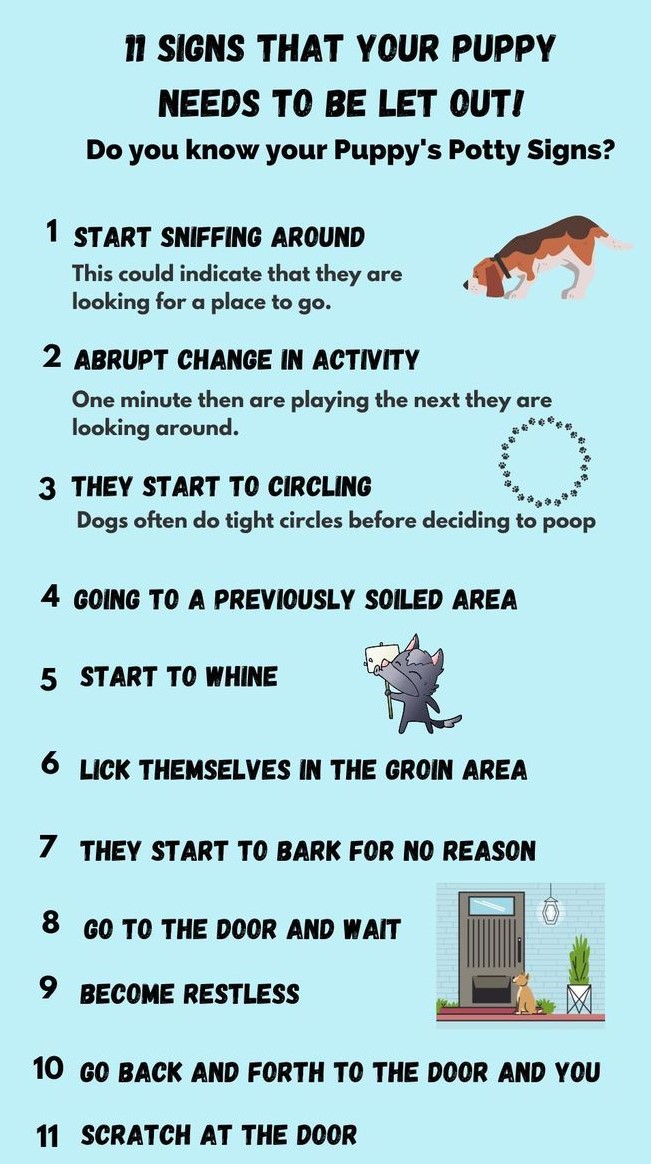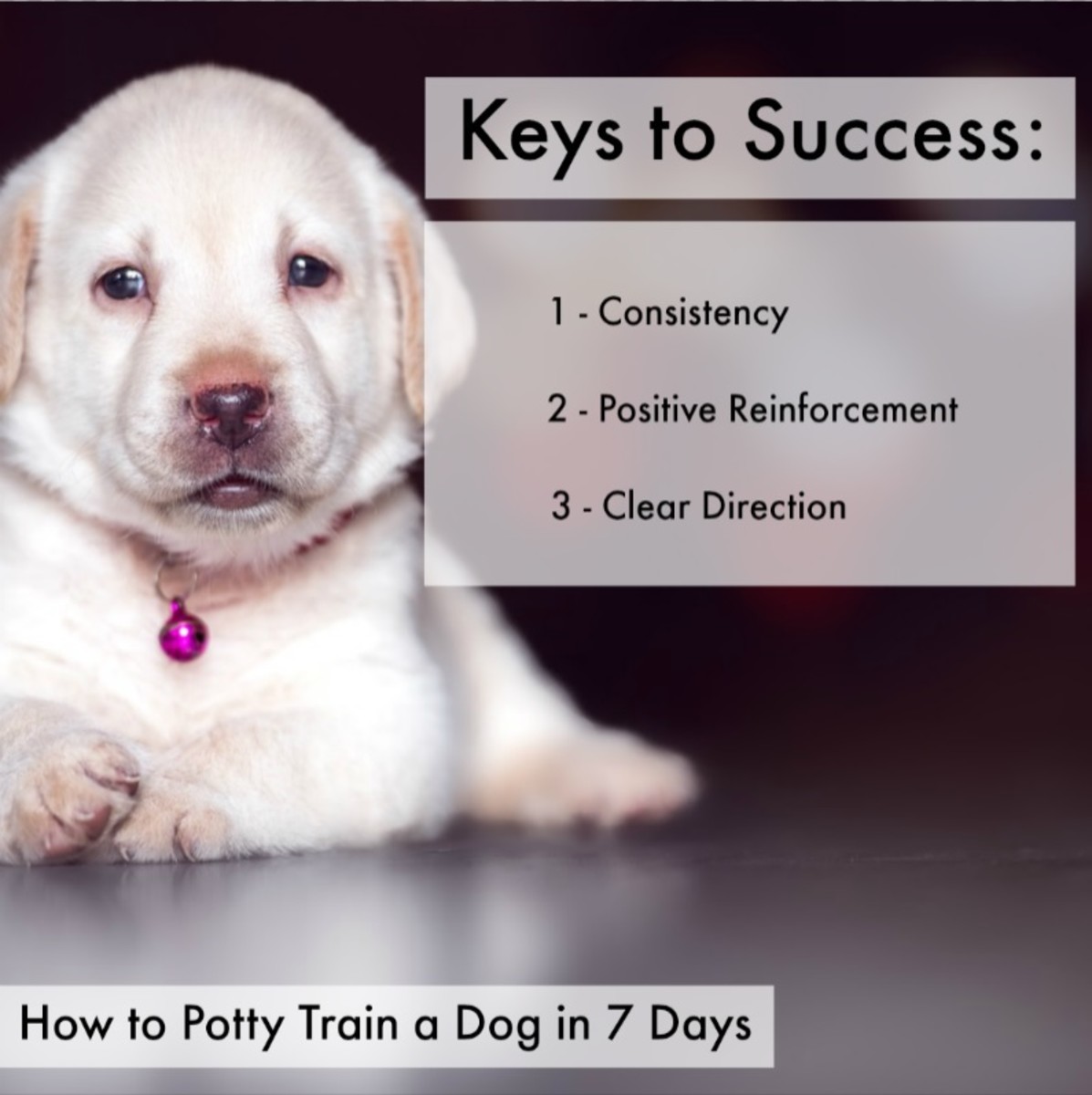To house train a dog in 7 days, establish a consistent routine for feeding, potty breaks, and bedtime. Use positive reinforcement and supervision to guide your dog to the designated potty area.
House training a dog is a crucial aspect of pet ownership. Whether you have a new puppy or an adult dog, proper house training sets the foundation for a harmonious relationship with your pet. By following a structured plan and being consistent, you can teach your dog to eliminate outside in just 7 days.
This article will provide you with practical, effective tips to successfully house train your dog within a week, ensuring a clean and stress-free living environment for both you and your furry friend.

Credit: www.amazon.com
Creating A Schedule
Creating a schedule is an essential part of house training your dog in just 7 days. By establishing a routine, you will help your furry friend understand when it’s time to eat, play, and go potty. Consistency is key when it comes to house training, and a schedule provides the structure your dog needs to learn and succeed. In this article, we will discuss two important aspects of creating a schedule – setting regular meal times and designating bathroom breaks.
Set Regular Meal Times
Setting regular meal times is crucial for house training your dog. By feeding your pet at the same time every day, you can predict when they will need to go potty, making it easier to prevent accidents in the house. Here’s how to set regular meal times:
- Choose a specific time of day to feed your dog, such as 7 am and 5 pm.
- Measure the appropriate amount of food for each meal according to your dog’s age and size.
- Place the food in your dog’s bowl and put it down in a designated feeding area.
- Allow your dog 15-20 minutes to eat. If they don’t finish their meal within that time, remove the bowl.
- Remember to provide fresh water for your dog throughout the day.
Designate Bathroom Breaks
In addition to setting regular meal times, designating bathroom breaks is crucial for house training success. By taking your dog outside at specific intervals, you can reinforce the behavior of going potty in the right place. Here’s how to designate bathroom breaks:
- Take your dog outside on a leash every 2-3 hours, starting from the moment they wake up.
- Choose a designated potty area in your yard or nearby, and always bring your dog to the same spot.
- Use a specific command, such as “Go potty,” to encourage your dog to do their business.
- Stay with your dog and give them praise and treats immediately after they finish going potty in the designated area.
- If your dog doesn’t go within 5-10 minutes, take them back inside and try again later.
By setting regular meal times and designating bathroom breaks, you will establish a solid schedule for your dog’s house training. Remember to be patient and consistent throughout the process, and always reward your dog for their good behavior. With dedication and a well-planned schedule, you can house train your dog in just 7 days!

Credit: suburban-k9.com
Choosing A Potty Area
When house training a dog, one of the crucial steps is to choose a designated potty area. This not only helps in keeping your living space clean, but also aids in effectively training your furry companion. Selecting the right spot and providing positive reinforcement will help your dog understand where it should do its business.
Select A Convenient Spot
Dogs are creatures of habit, and they prefer a consistent spot for potty time. When choosing the potty area, opt for a quiet and easily accessible spot within your yard. Ensure the spot is away from their feeding and resting areas as dogs naturally avoid soiling in close proximity to where they eat or sleep. It’s important to consider a spot with adequate drainage and one that is easy for you to take your dog to without any hassle.
Use Positive Reinforcement
Positive reinforcement is key to training your dog where to potty. Whenever your dog does its business in the chosen spot, offer verbal praise, pats, or treats to reinforce the good behavior. This positive reinforcement helps the dog associate the designated potty area with a positive outcome, making it more likely to continue using that spot for their needs.
Using Crate Training
House training a dog using crate training is an effective and humane method that can lead to quick results. When introduced and used correctly, a crate can become a safe and comfortable space for your dog, helping them learn to control their bladder and bowel movements. Below, we’ll explore the necessary steps to successfully house train your dog using crate training.
Introduce The Crate
To successfully use crate training for housebreaking, you first need to introduce the crate to your dog as a positive and safe place. Choose a crate that is large enough for your dog to comfortably stand up, turn around, and lay down. Place soft bedding inside the crate to make it cozy and inviting. Introduce the crate gradually, encouraging your dog to explore it by placing treats and toys inside. Set the crate in a calm, quiet area of your home where your dog can rest undisturbed.
Establish A Routine
Establishing a routine is crucial to the success of crate training. Take your dog outside to relieve themselves immediately after waking up, after meals, and before bedtime. When introducing the crate, ensure to allow your dog to spend short periods inside, gradually increasing the duration as they become more comfortable. Create a consistent schedule where your dog spends time in the crate and is let out at regular intervals for bathroom breaks and exercise. Consistency and positive reinforcement are key to achieving success within a short period.
Consistency And Patience
When it comes to house training a dog, two essential qualities are required – consistency and patience. These two elements form the foundation of a successful training regimen, allowing your furry friend to learn and adapt to their new environment within a short span of 7 days. In this article, we will explore how staying consistent in your training methods and displaying patience and encouragement towards your four-legged companion can yield fantastic results.
Be Consistent In Training
To effectively house train your dog in just 7 days, it is crucial to maintain consistency throughout the training process. Dogs are quick learners, but they require a clear and structured routine to grasp commands and expectations.
Avoiding confusion is key to successful training. Ensure that all family members and anyone interacting with the dog consistently use the same commands and techniques. Consistency in both verbal and non-verbal cues will help your dog to understand and respond appropriately.
Setting a schedule is equally important in maintaining consistency. Establish regular feeding times and take your dog outside at specific intervals, such as after meals or naps. By doing so, your dog will begin to associate certain behaviors with specific times, making it easier for them to grasp the house training process.
Show Patience And Encouragement
Patiently guiding your dog through the house training process is crucial for their success. Remember, learning a new behavior takes time and practice.
Dogs may make mistakes during the training period, but it is essential to remain patient and avoid punishment. Positive reinforcement is the most effective way to encourage desired behaviors. Praise and reward your dog every time they eliminate outside, and they will quickly associate this positive experience with their actions.
Additionally, displaying patience and understanding when accidents occur is paramount. Avoid scolding or showing frustration towards your dog, as this may hinder their progress and create stress during the training process.
Remember, each dog is unique, and the speed at which they understand and adapt may vary. Showing patience and encouragement enables your dog to feel secure and helps establish a strong bond between you and your pet.
In conclusion, consistency and patience are the building blocks of successful house training. By staying consistent with your training methods, maintaining a structured schedule, and showing patience and encouragement towards your furry friend, you can help them grasp the house training process in just 7 days. So, gear up with these qualities, embark on the journey with your dog, and witness the remarkable transformation!
Addressing Accidents
Clean Up Thoroughly
Dog accidents can happen, especially during the house training process. When accidents occur, it’s crucial to clean up thoroughly to prevent future accidents in the same spot. Dogs have a strong sense of smell and can be attracted to previous accident areas if not properly cleaned. Here are some important steps to follow when cleaning up after an accident:
- Act quickly – Clean up the mess as soon as you discover it.
- Use an enzymatic cleaner – Regular household cleaners may not completely eliminate the odor. Enzymatic cleaners break down the proteins in urine and feces, neutralizing the scent.
- Blot, don’t rub – Gently blot the affected area with a clean cloth or paper towel. Avoid rubbing, as it can spread the stain and odor.
- Rinse with water – After blotting, rinse the area with water to further remove any remaining residue.
- Dry thoroughly – Make sure the area is completely dry to discourage your dog from returning to the spot. You can use a fan or open windows to aid in the drying process.
Avoid Punishments
It’s important to remember that accidents are a normal part of the house training process. Punishing your dog for accidents can have negative consequences and hinder their progress. Here’s why you should avoid punishments:
- Punishments can create fear and anxiety, making it harder for your dog to learn.
- It may cause your dog to become secretive about their accidents and find hidden spots in the house.
- Your dog may associate punishment with going to the bathroom, leading to an aversion to eliminating altogether.
- Punishments can strain the bond between you and your dog, affecting trust and overall training success.
Instead of punishments, focus on positive reinforcement. Reward your dog when they eliminate in the appropriate spot and provide plenty of praise and encouragement. Consistency and patience are key in successfully house training your dog in just 7 days.

Credit: pethelpful.com
Progress Monitoring
Progress monitoring is an essential aspect of house training your dog. By tracking your dog’s progress and making necessary adjustments along the way, you can ensure that the training process is successful. In this article, we will explore two important steps in progress monitoring: tracking your dog’s progress and making necessary adjustments.
Track Your Dog’s Progress
Tracking your dog’s progress is crucial in determining whether your house training efforts are effective. By keeping a close eye on your dog’s behaviors and actions, you can identify patterns and make informed decisions about the training program. Here are a few steps to help you track your dog’s progress:
- Observe your dog’s bathroom habits: Pay attention to when your dog needs to go to the bathroom and how often. Take note of any predictable patterns.
- Use a bathroom log: Keep a log of when your dog eliminates and how successful they are in doing so. This can help you identify any areas that need improvement or patterns that emerge.
- Monitor accidents: Keep track of any accidents that occur in the house. This can help you identify if your dog is struggling with certain aspects of the training process.
Make Necessary Adjustments
Once you have tracked your dog’s progress, it’s essential to make necessary adjustments to the training program. By doing so, you can address any challenges or issues that arise and ensure continued progress. Here are a few steps to help you make necessary adjustments:
- Identify areas of improvement: Review your observations and logs to identify any areas where your dog may be struggling or not progressing as desired.
- Modify the training routine: Based on the areas of improvement, make adjustments to your dog’s training routine. This may include changing the frequency of bathroom breaks, adjusting the reward system, or modifying the schedule.
- Reinforce positive behaviors: Focus on reinforcing positive behaviors by rewarding your dog when they successfully eliminate outside. This will help them understand what behaviors are desirable and encourage continued progress.
By regularly tracking your dog’s progress and making necessary adjustments, you can effectively house train your dog within a short period. Remember to have patience and consistency throughout the process, as every dog learns at their own pace. Taking these steps will ensure that your dog becomes a well-trained and obedient member of your household.
Frequently Asked Questions For How To House Train A Dog In 7 Days
Can A Dog Be House Trained In 7 Days?
House training a dog in 7 days is possible with consistency, positive reinforcement, and a structured routine. Start by crate training, rewarding good behavior, and supervising closely. Gradually increase freedom and use verbal cues. Accidents will happen, but stay patient and consistent for best results.
How Often Should I Allow My Dog Outside During House Training?
During house training, it is important to take your dog outside every 2-3 hours, especially after meals, waking up from a nap, and playtime. Monitor your dog’s behavior and signs of needing to eliminate. As your dog becomes better at holding it, you can gradually increase the intervals.
What Should I Do If My Dog Has An Accident Indoors?
If your dog has an accident indoors, remain calm and do not scold or punish them. Clean up the mess with an enzymatic cleaner to eliminate any scent. Immediately take your dog outside to the designated potty area, and reward them when they eliminate outside.
Consistency is key to successful house training.
Conclusion
In just 7 days, you can successfully house train your dog with these effective tips and techniques. By providing consistent and positive reinforcement, establishing a routine, and using the right training methods, you can teach your furry friend where to go potty in no time.
Remember, it takes patience and persistence, but with these steps, you’ll be well on your way to having a well-trained and well-behaved dog. Happy training!



